FIGURE 2 Effects of procumboside B (pB) on the viability of RAW264.7 cells.
Data presented are the mean ± SD, n=6, compared with the control group.

FIGURE 3 Effects of pB on nitric oxide (NO) production(A)and nitric oxide synthase (iNOS) mRNA expression(B)in RAW264.7 cells. Data presented are the mean ± SD, n = 3, Compared with the control, ***p<0.001, **p<0.01.
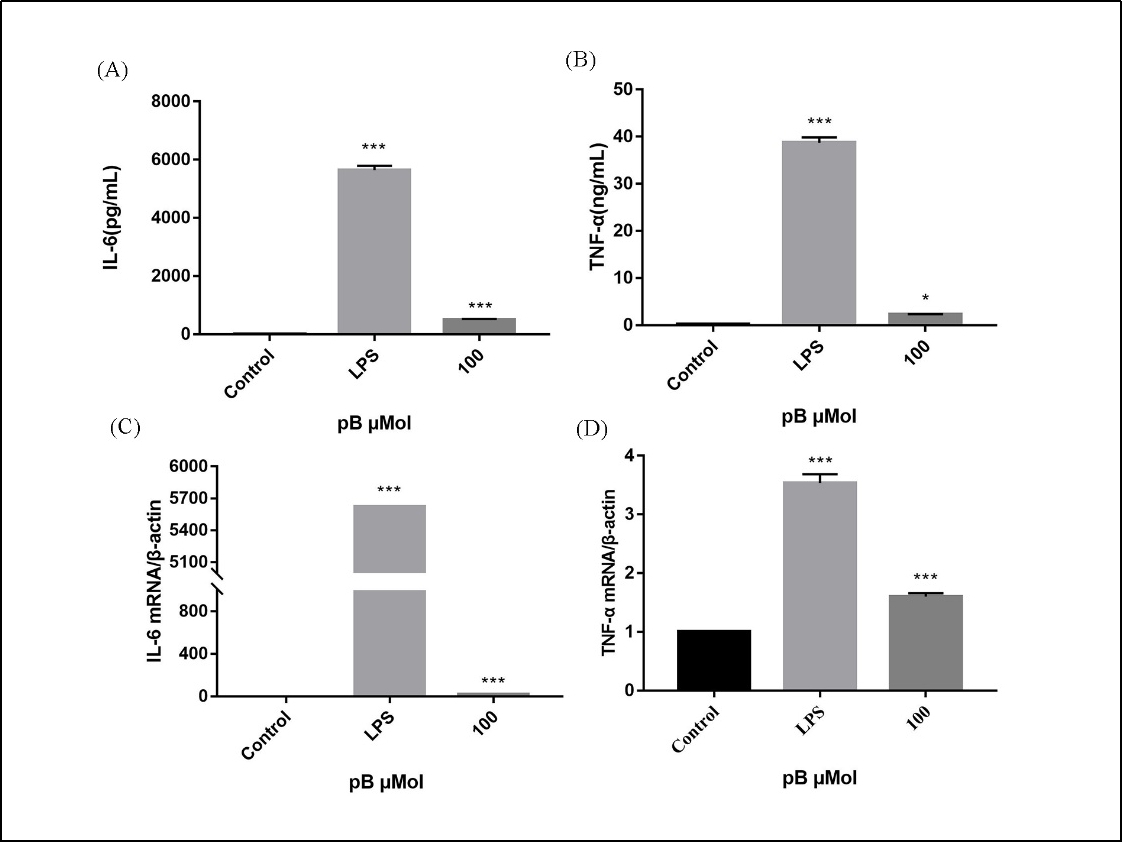
FIGURE 4 The effects of pB on the expression of IL-6(A), TNF-α (B), interleukin-6 (IL-6) (C), and TNF-α(D)mRNA in RAW264.7 cells. Data presented are the mean ± SD, n=3, compared with the control, ***p<0.001 and *p<0.05.
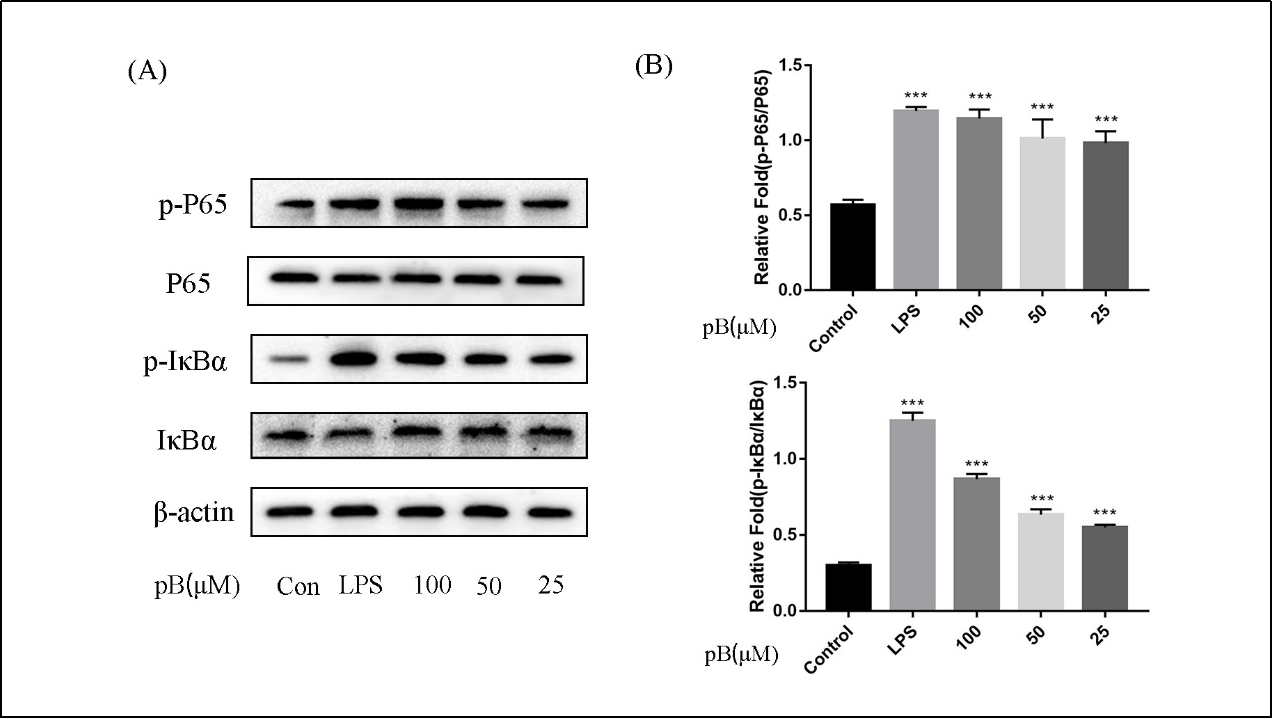
FIGURE 5 (A) The expression of p-P65, P65, p-IκBα and IκBα were detected using Western blotting. (B) The ratio of the content of p-P65/P65 and p-IκBα/IκBα content. Data presented are the mean ± SD, n = 3. Compared with the control, ***p < 0.001.
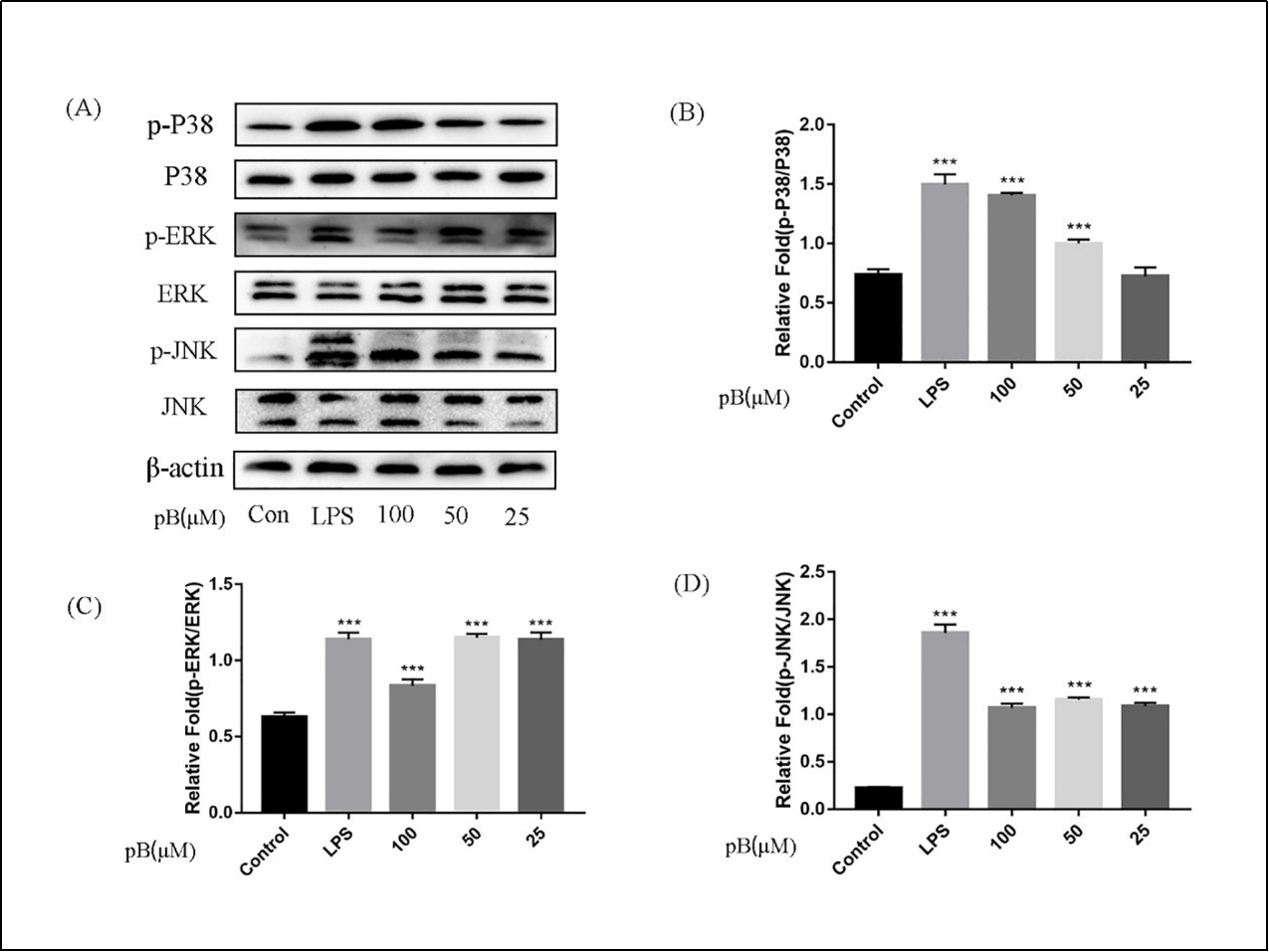
FIGURE 6 (A) The expression of p-P38, P38, p-ERK, ERK, p-JNK, and JNK detected using Western blotting. (B) The ratio of the content of p-P38/P38. (C) The ratio of the content of p-ERK/ERK. (D) The ratio of the content of p-JNK/JNK. Compared with the control, ***p < 0.001.
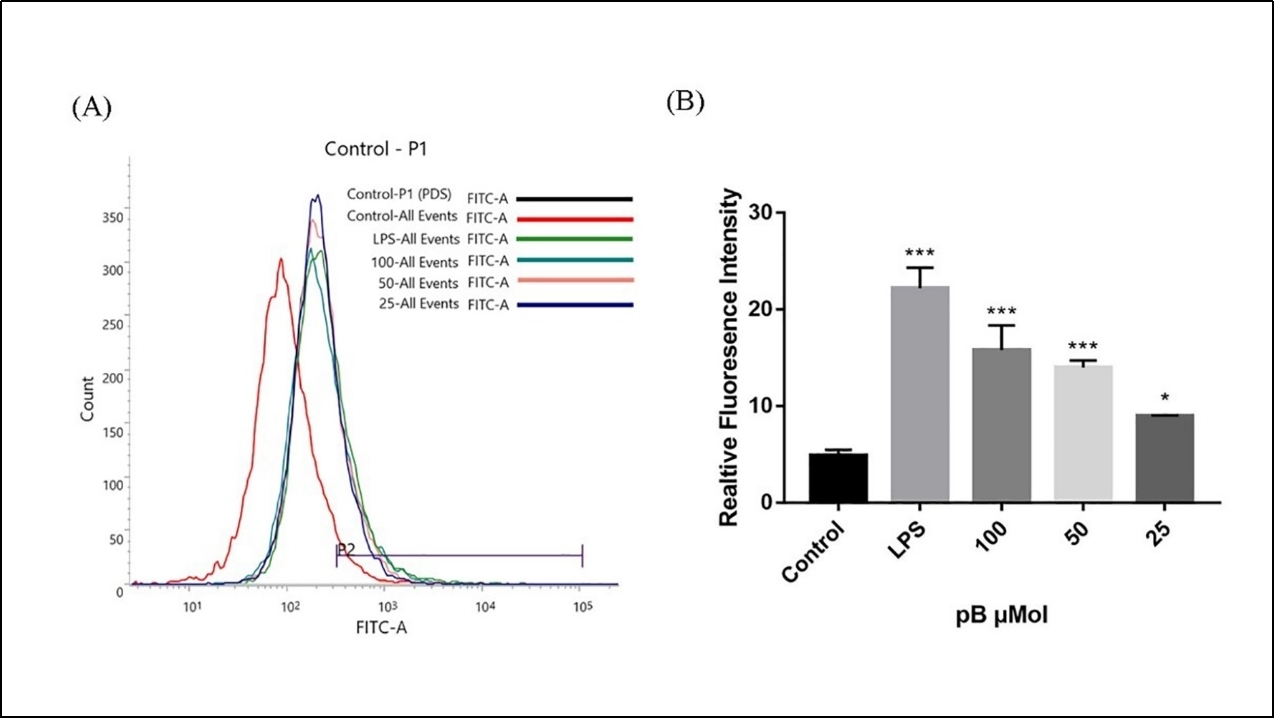
FIGURE 7 (A)The fluorescence intensity was determined by flow cytometry at the FITC channel. (B) The realitive fluoresence intensity of ROS per group. Data presented are the mean ± SD, n = 3. Compared with the control, ***p < 0.001 and *p < 0.05.
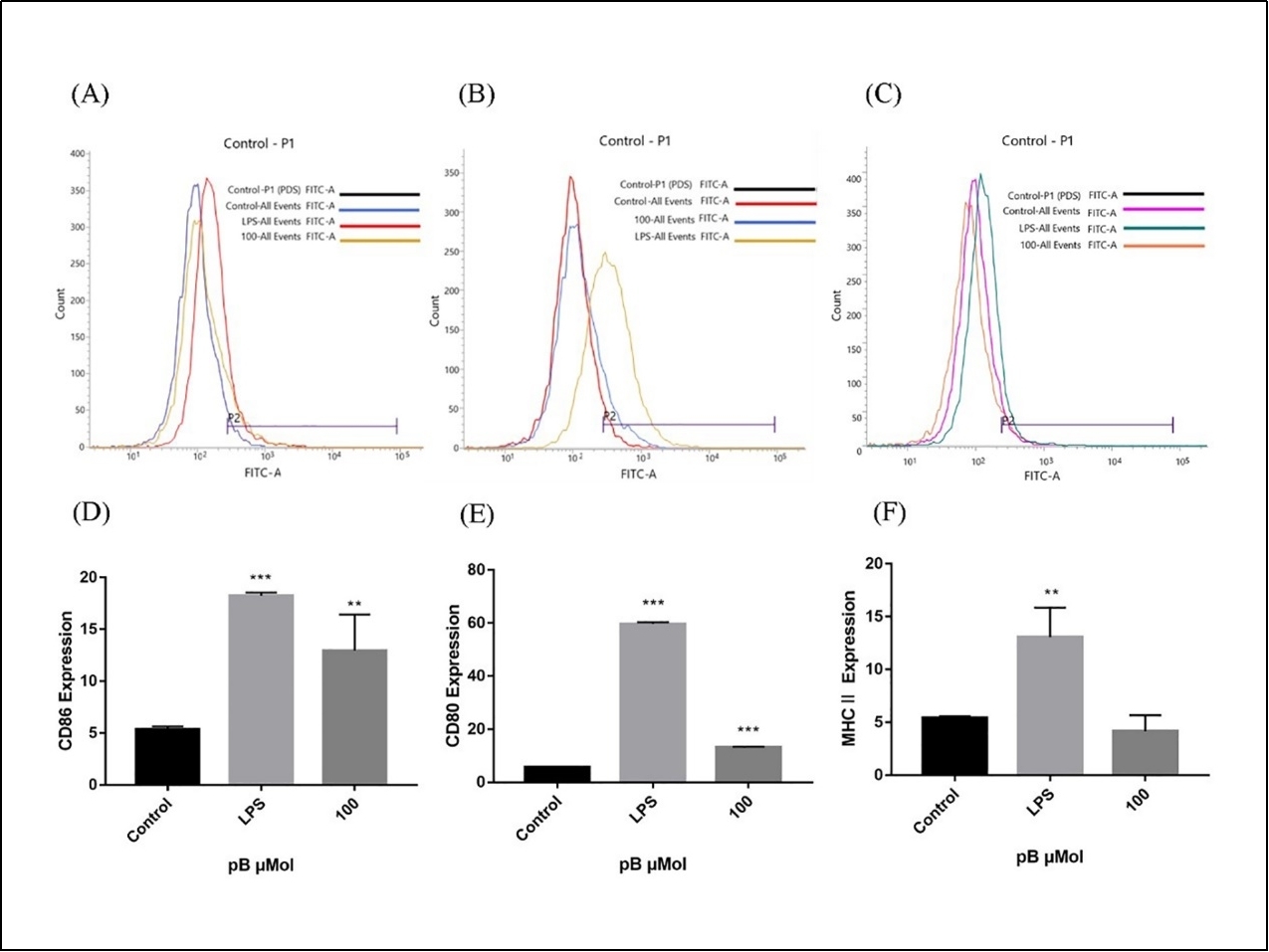
FIGURE 8 Flow cytometric analysis of CD86, CD80, and MHC II expressions on the surface of RAW264.7 cells. (A, D) represent the results of CD86 expression.
(B, E) represent the results of CD80 expression. (C, F) represent the results of MHC II expression. Data presented are the mean ± SD, n = 3. Compared with the control, ***p < 0.001 and **p < 0.01.
结论: 本研究从墨角兰植物40%乙醇提取中分离得到4个化合物,包括1H-indole-2-carboxylic acid (1), (+)-lariciresinol (2), (+)-isolariciresinol(3), 和 procumboside B (4, pB)。免疫活性表明pB具有较强的免疫活性。其机制可能激活RAW264.7细胞中NF-κB和MAPKs信号通路有关,从而释放细胞因子,增强免疫应答;同时可上调巨噬细胞中CD86和CD80的表达,增强巨噬细胞抗原呈递。这个结果为进一步研究墨角兰作为具有免疫调节作用的营养补充剂提供理论基础。
Origanum majorana L.: A Nutritional Supplement With Immunomodulatory Effects
Senye Wang1,2‡, Li Zhou1,2‡, Fatma Al-Zahra K. K. Attia 2,5, Qi Tang1,2, Mengke Wang1,2, Zhenhua Liu1,2*, Geoffrey I.N. Waterhouse1,2,4*, Lijun Liu1,3*, Wenyi Kang1,2*
1National R& D Center for Edible Fungus Processing Technology, Henan University, Kaifeng 475004, China
2 Joint International Research Laboratory of Food & Medicine Resource Function, Henan Province, Kaifeng 475004, China
3 Huaihe Hospital, Henan University, Kaifeng 475004, China
4 School of Chemical Sciences, University of Auckland, Auckland 1142, New Zealand
5Department of Ornamental, Medicinal and Aromatic Plants, Faculty of Agriculture, Assiut University, Asyut 71515, Egypt
‡These authors contributed equally to this work.
*Corresponding authors to: Zhenhua Liu, Email: 10200113@vip.henu.edu.cn; Geoffrey I.N.
Waterhouse, Email: g.waterhouse@auckland.ac.nz; Lijun Liu, Tel: 13683781131;
Wenyi Kang, E-mail: kangweny@hotmail.com
Abstract: Origanum majorana L. is an aromatic herb that has been grown in several Mediterranean countries since ancient times, but became popular during the Middle Ages as a medicinal plant and seasoning ingredient. O. majorana has many pharmacological effects, but its immunoreactive components and mechanisms are still unclear. In this study, four compounds were isolated and identified from O. majorana by a spectral analysis, including1H and13C-NMR. They were 1H-indole-2-carboxylic acid (1), (+)-laricresol (2), (+)-isolaricresol (3), and procumboside B (4, pB), which were isolated for the first time in O. majorana. The immunomodulatory effects of the four compounds were screened, and pB had good immunomodulatory activity on RAW 264.7 cells. The immunomodulatory mechanism of pB was proved, in which pB could increase the secretion of nitric oxide (NO), interleukin-6 (IL-6), tumor necrosis factor-α (TNF-α), and reactive oxygen species (ROS) and simultaneously upregulate the expression of CD80 and CD86 on the cell surface. These results suggested that the mechanism of pB may be related to the activation of nuclear factor-kappaB (NF-κB) and mitogen-activated protein kinases (MAPKs)-signaling pathways. O. majorana is rich in nutrients and is commonly used in diets, so it can be used as a nutritional supplement with immunomodulatory effects.
Reference: Wang S, Zhou L, Attia FA-ZKK, Tang Q, Wang M, Liu Z, Waterhouse GIN, Liu L and Kang W (2021) Origanum majorana L.: A Nutritional Supplement With Immunomodulatory Effects. Front. Nutr. 8:748031. Doi: 10.3389/fnut.2021.748031